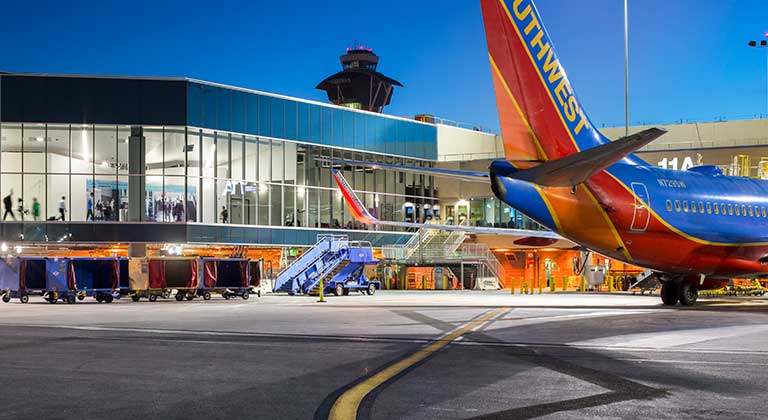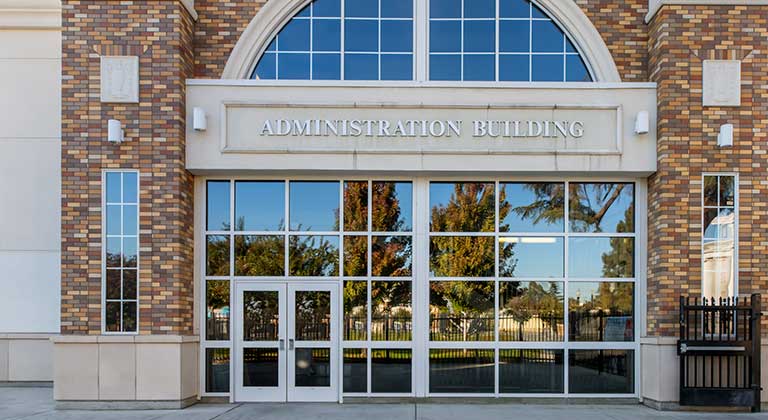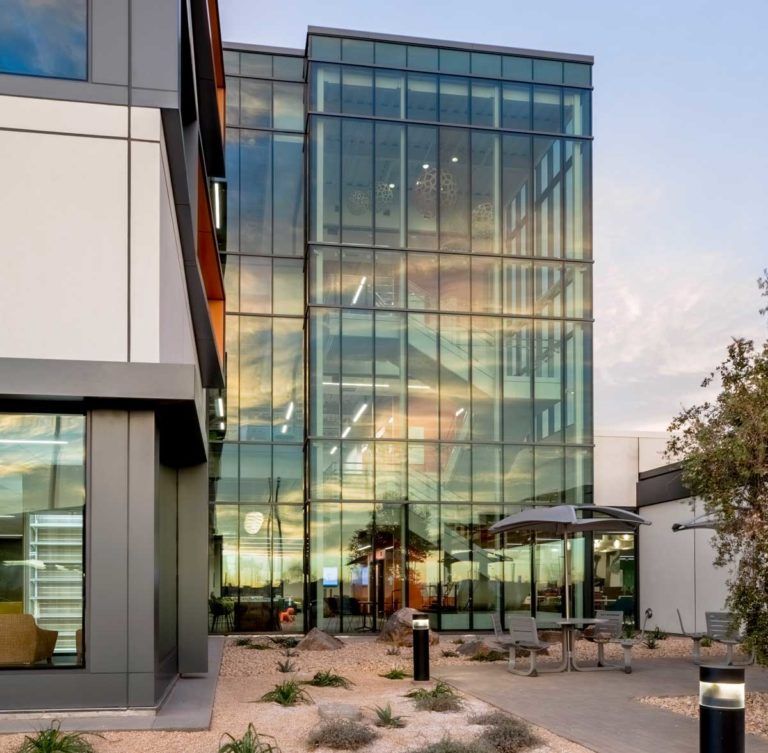A large portion of our glazing work at Giroux Glass involves installation of curtain wall – the non-load-bearing exterior wall that functions as a protective façade of many a skyscraper, office building, or other commercial construction. Named for the fact that it hangs (like a curtain) from the face of a floor slab, curtain wall can be constructed from any type of frame, cladding, or covering material. In glazing, however, the term “curtain wall” typically refers to aluminum-framed systems, set with recurring units of glass, panels, or other building materials.

Curtain Wall vs. Window Wall and Storefront Glass
In regards to glazing, curtain wall differs from other large-scale glass installations like storefront and window wall in size, application and drainage methods.
Unlike window wall, which sets units of glass within the structural components of a wall, curtain wall systems are suspended over the building’s structural elements, providing cover, but no support. Because of this, each unit is longer than a window wall unit – 14 feet or higher – and extends beyond the length of one floor. Curtain wall units are also taller than the typical storefront unit, which generally measures 10-12 feet in height.

Curtain wall can be applied over any story of a building, while storefront is only installed along the bottom floor, and window wall can only be set at the second story or higher. And unlike storefront and window wall systems, which channel water across the horizontal and vertical perimeter of the installation as a whole, each unit in a curtain wall system drains individually. This system is advantageous, as it distributes water across a broader surface, which reduces wear and tear.
Unitized Curtain Wall vs. Stick Curtain Wall
Generally speaking, there are two main types of curtain wall systems, unitized curtain wall and stick curtain wall. Though aesthetically similar, the two are manufactured differently, and are better suited to specific types of projects.
Related Read: 3 Influential Curtain Wall Projects

Unitized Curtain Wall
In unitized curtain wall systems, units are assembled and glazed at a manufacturing facility, then shipped to the work site for installation. Glaziers at the job site then connect the units together horizontally and vertically, using a system of anchors and mullions. Because they’re pre-assembled at a facility, these units tend to be extremely uniform.
Due to their uniformity, unitized systems are better equipped to handle environmental stress, allowing for thermal expansion and contraction, differential movement between floors, concrete creep, column foreshortening, and/or seismic movement. Most unitized curtain wall systems are installed in a sequential manner around each floor level, moving upward from the bottom to the top of the building.

Stick Curtain Wall
Unlike unitized systems which arrive somewhat pre-constructed, stick curtain wall systems are shipped directly to the worksite in pieces, where they are assembled, glazed, and installed all together. Constructing systems this way does allow more room for error, however, it also affords more customization. Because they arrive in pieces, the components of a stick curtain wall may be cut, machined, assembled, and sealed to meet the specific dimensions of the project. And while unitized systems can to extend to a maximum height of merely two floors, stick-built systems can be split and extended to reach far greater heights. Frame assembly requires the use of specialized connections to ensure proper installation.
_____
A curtain wall system’s performance is only as good as the workmanship that goes into its fabrication and construction. There are many issues that can affect the final quality and durability of these installations, from repair accessibility to weather conditions, to the presence of dirt and dust on the job site. That’s why it’s imperative to hire a highly experienced, qualified glazing company to handle your curtain wall fabrication and installation.
Our team at Giroux Glass has over thirty years of experience installing all types of curtain wall. We have in-depth knowledge of every system and supporting technology on the market, and have developed strict protocols to minimize risks and other variables that can compromise the quality of your curtain wall system.